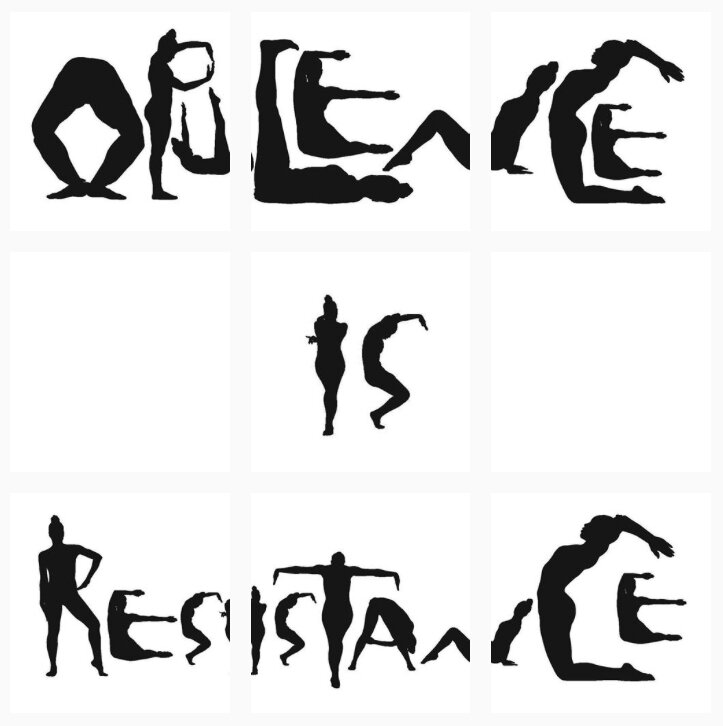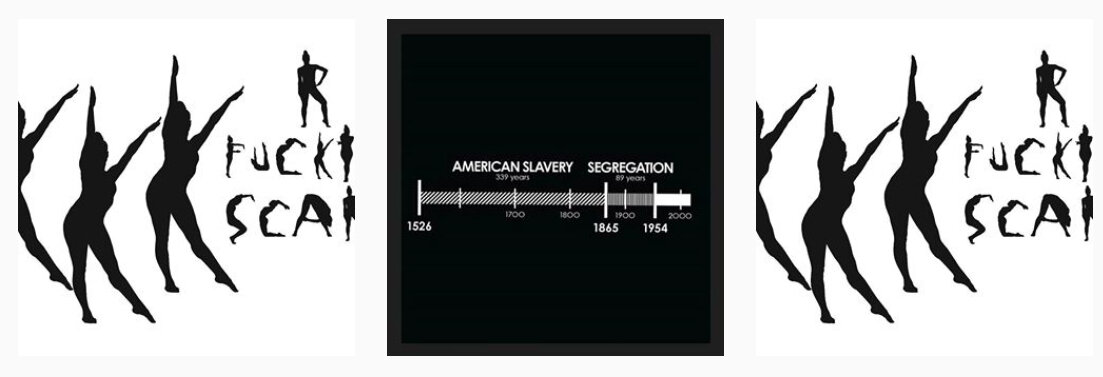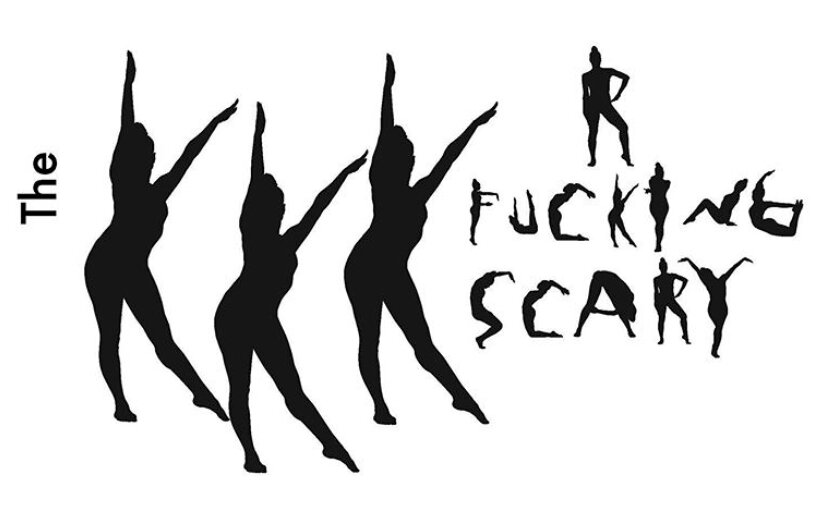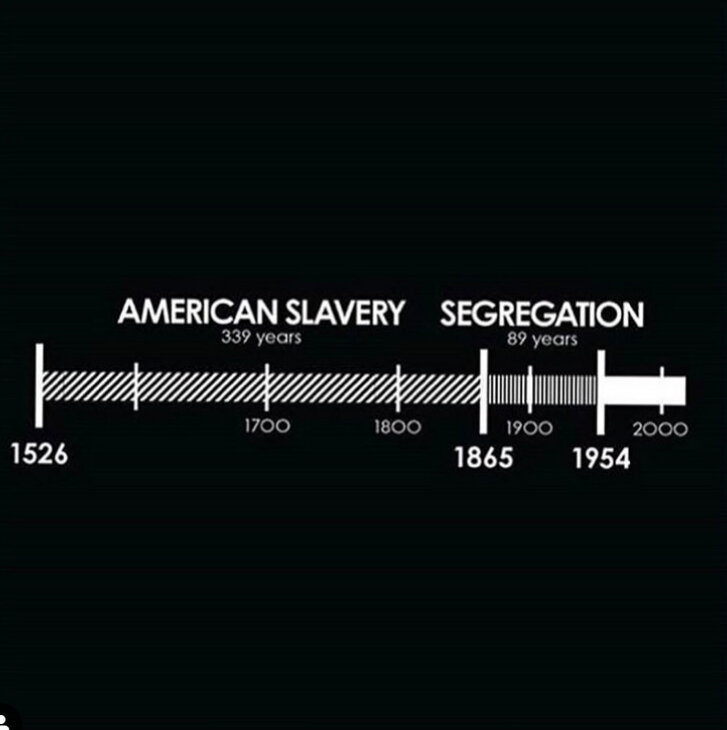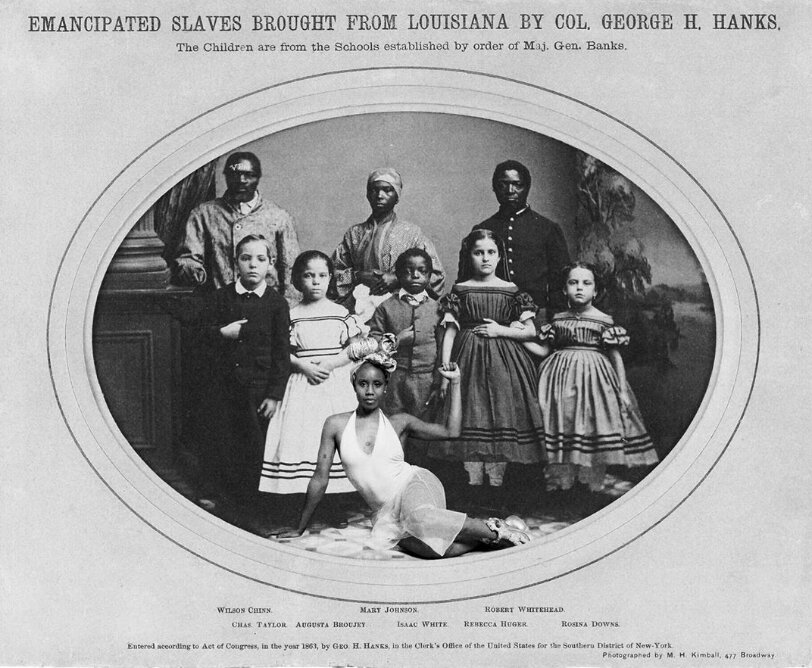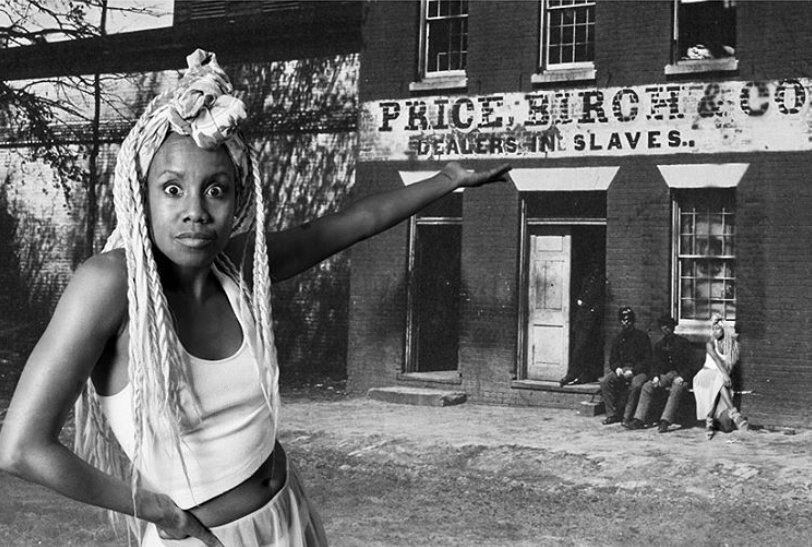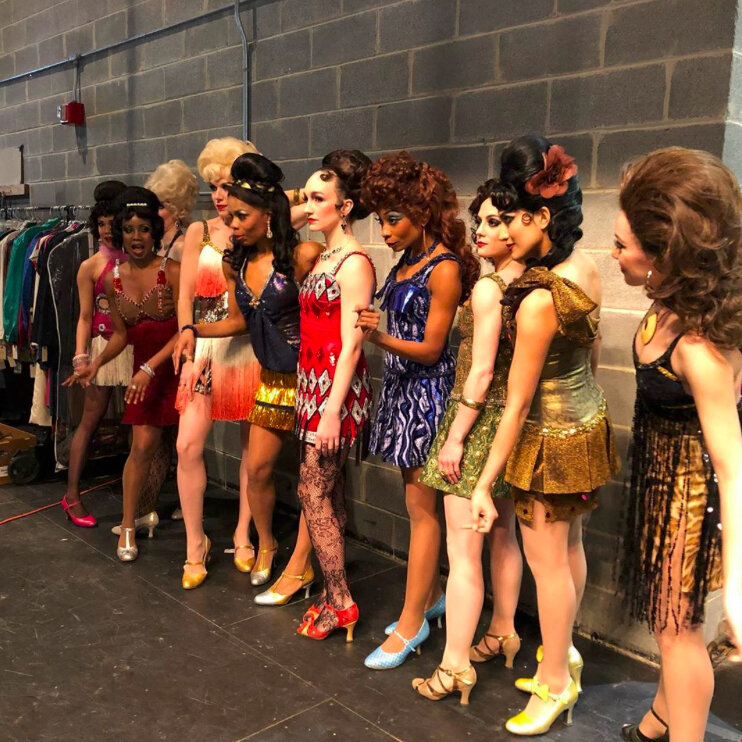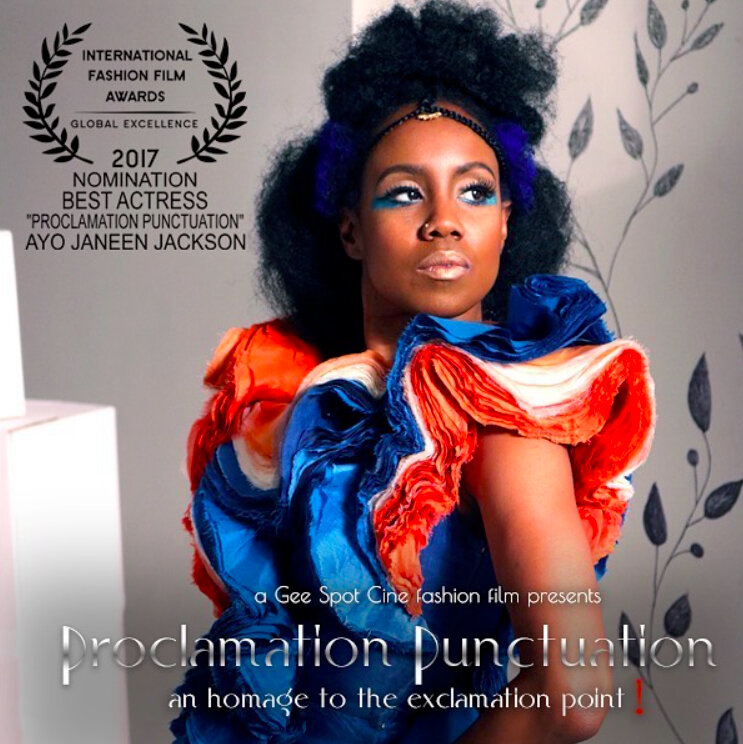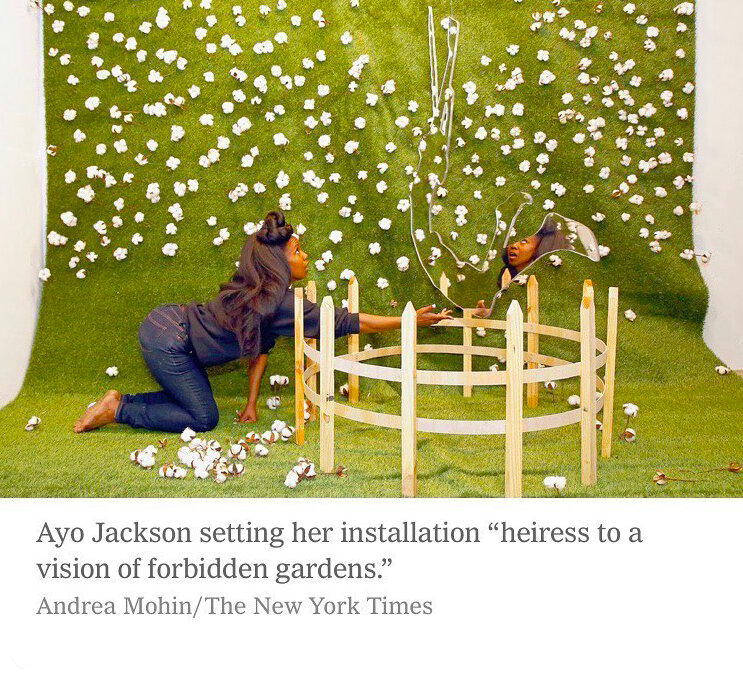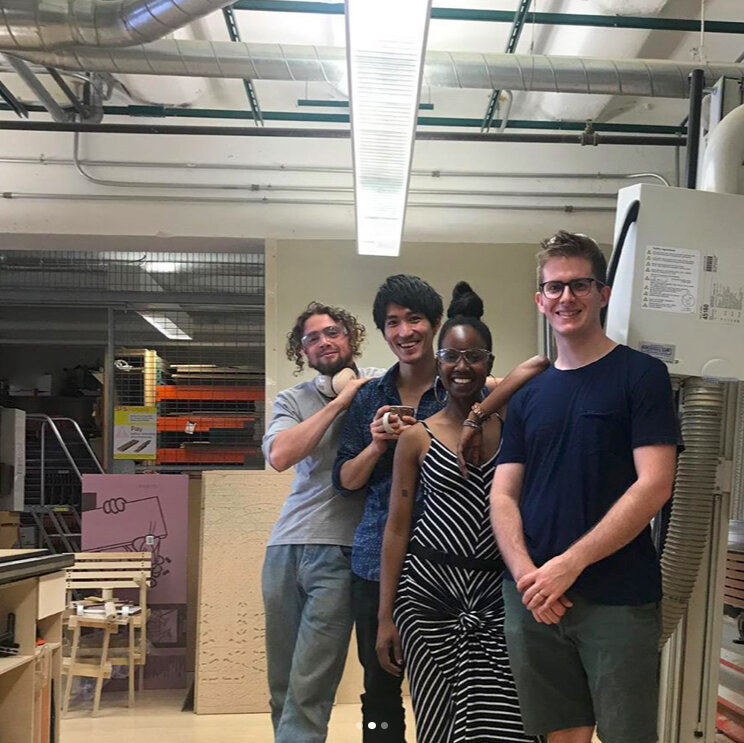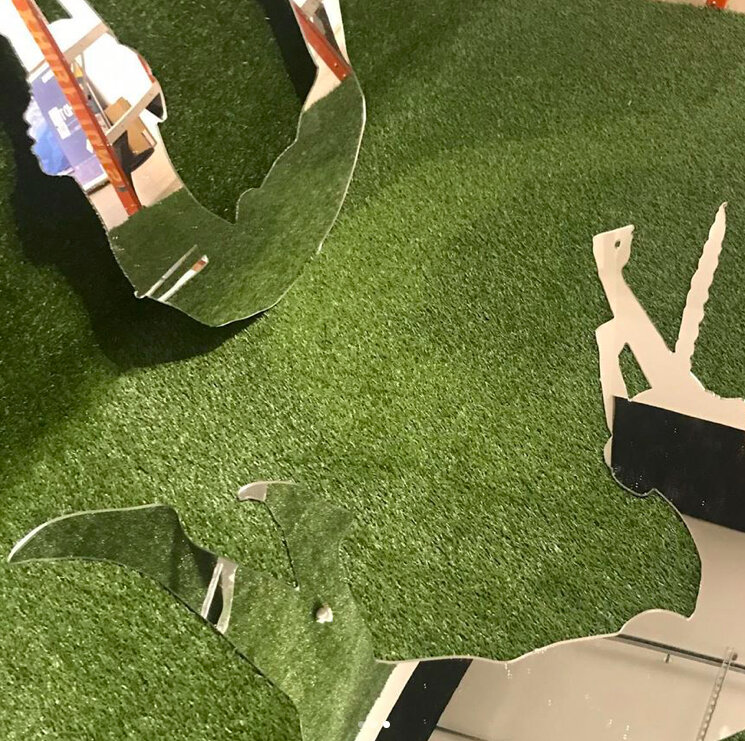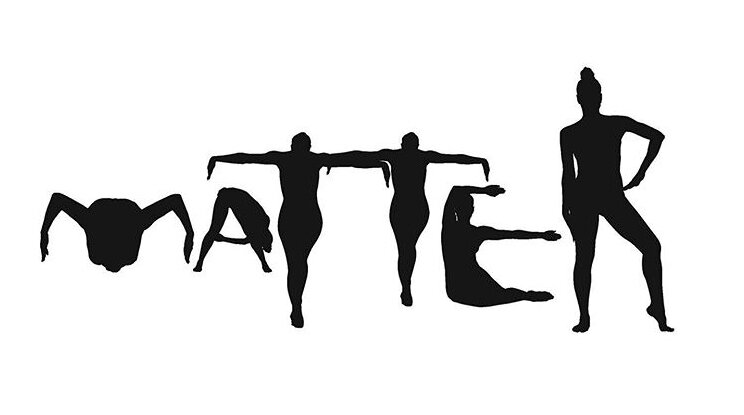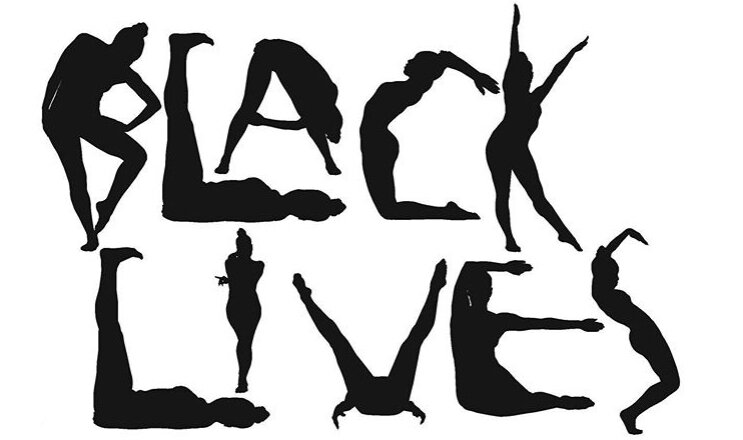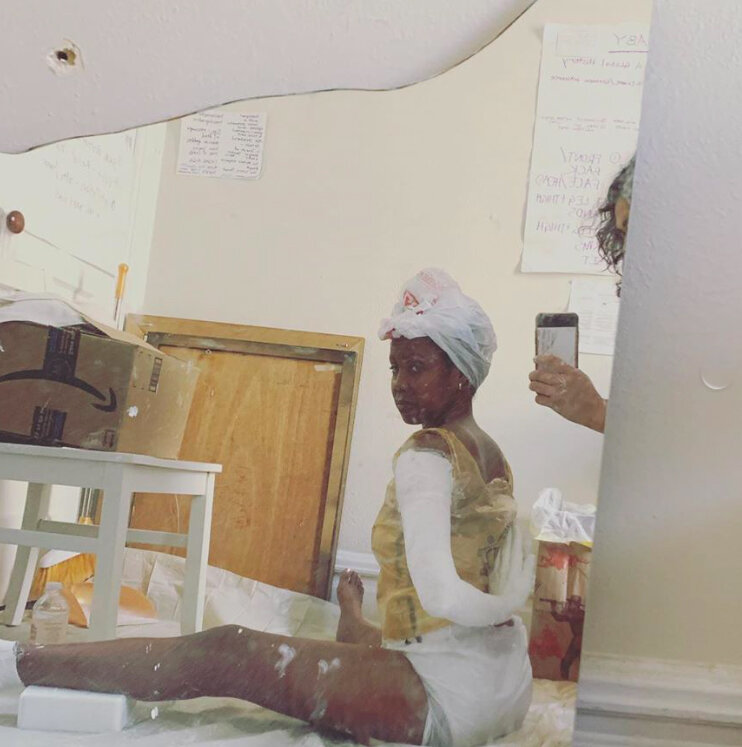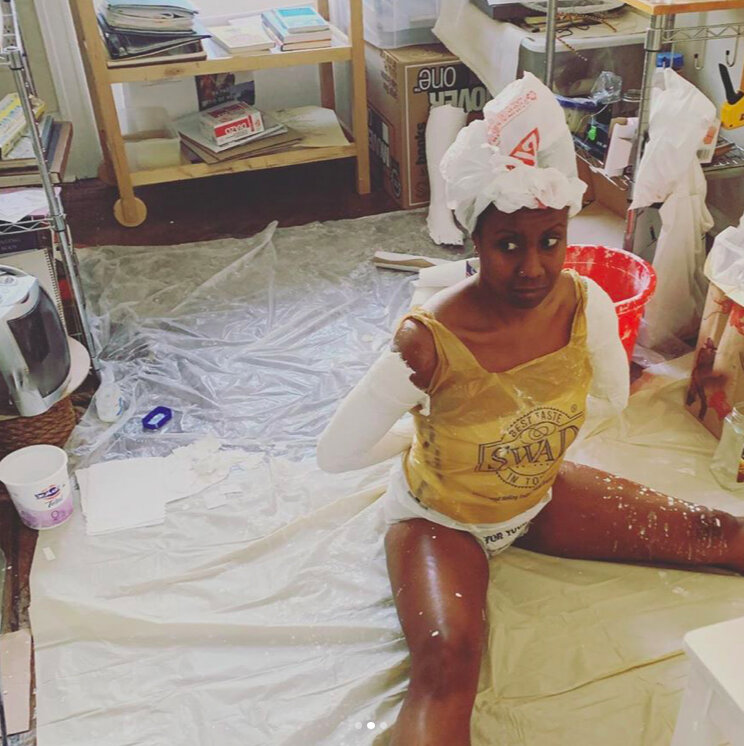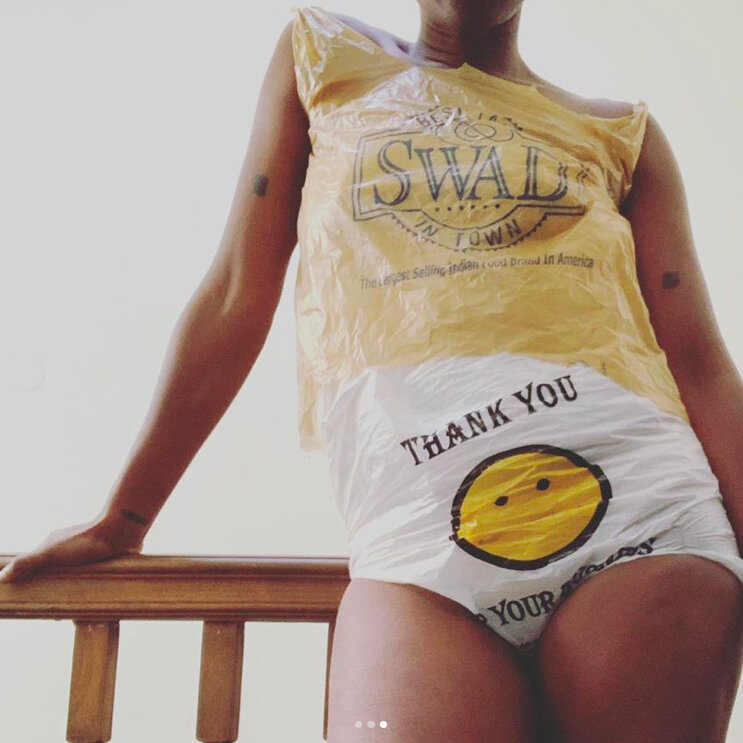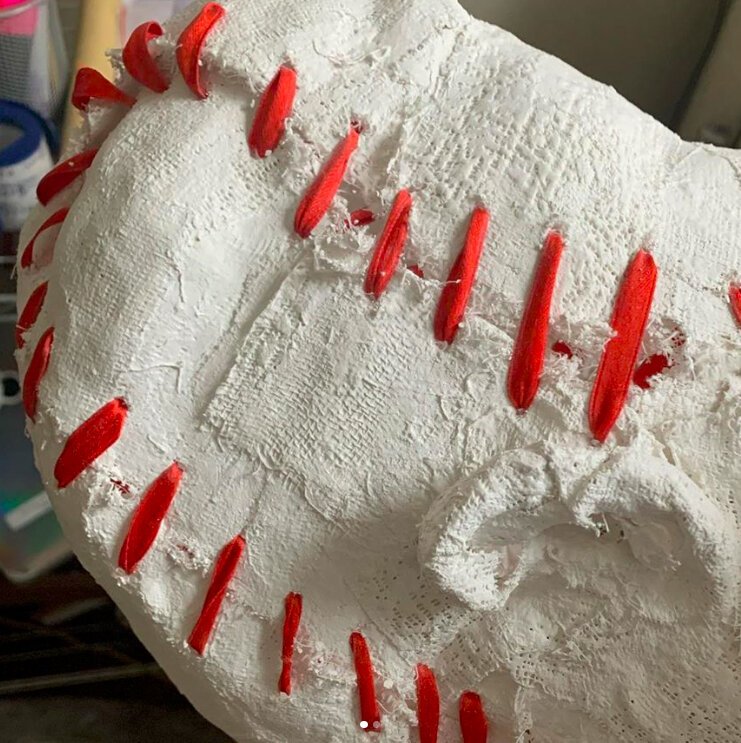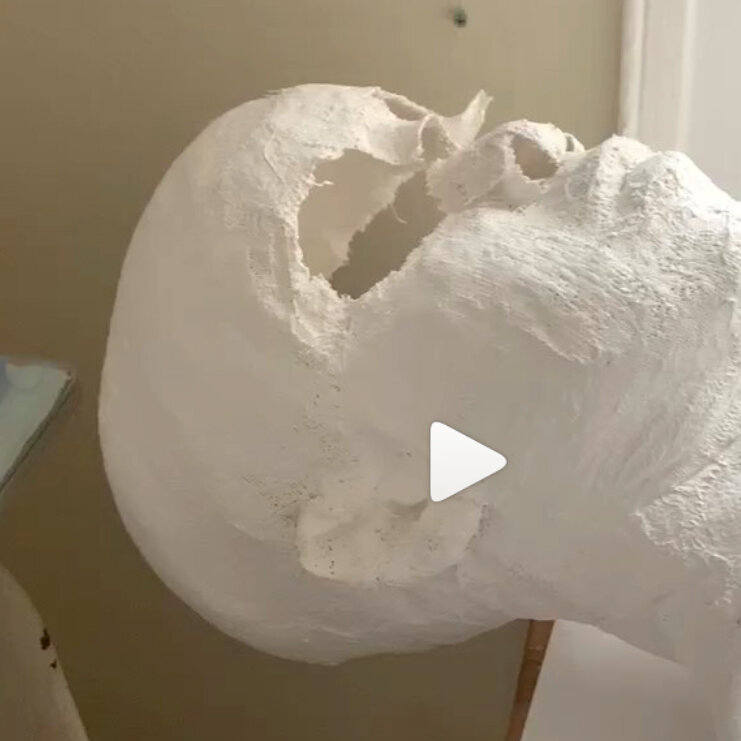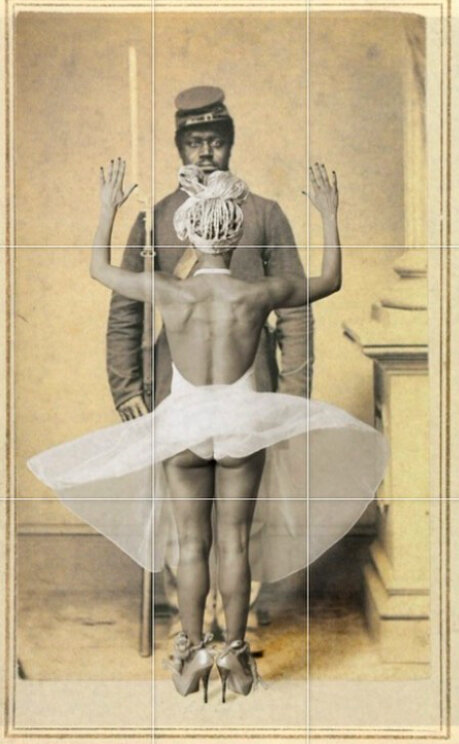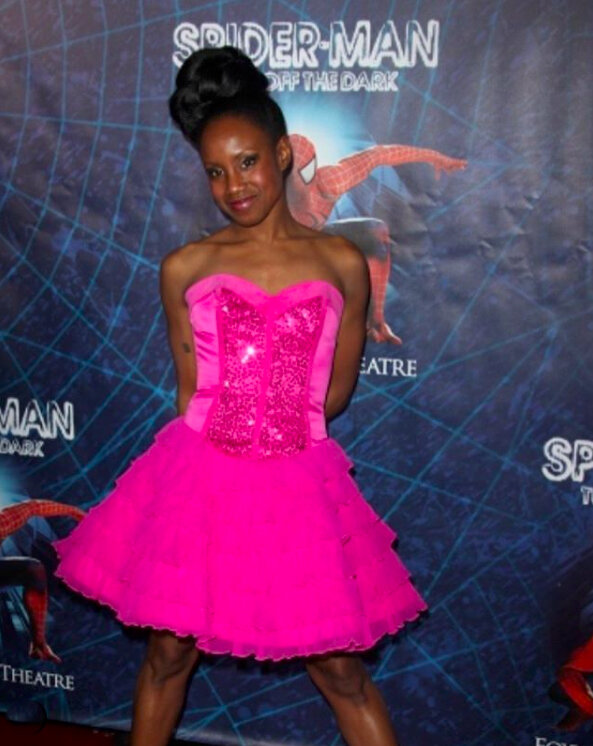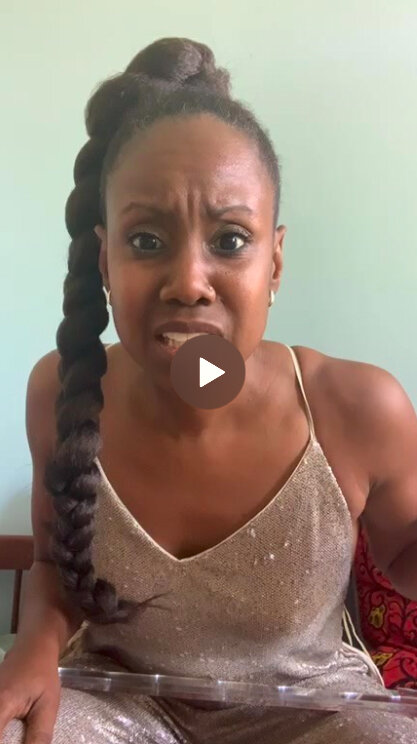Interview with Ayo Janeen Jackson
Interview with Ayo Janeen Jackson
June 2020 Digital Resident
Originally from North Carolina, Ayo Jackson graduated with her BFA in Dance from UNC School of the Arts. A Princess Grace award winner, Jackson established her artistic career with The Bill T. Jones/ Arnie Zane Dance Company, continuing with the French contemporary ballet company, Ballet Preljocaj. After living in Europe, Jackson returned to NYC performing in Julie Taymor’s Turn Off the Dark (Spiderman on Broadway). Jackson continued to assist Bill T. Jones while producing a body of visual artwork, which led to her to participate in several gallery shows and exhibitions. Jackson is currently planning her first solo show- Tear Suture Scab 2020. She holds a Masters in Interdisciplinary Arts from The School of the Art Institute of Chicago (2018).
Mineral House Media: Can you tell us a little about yourself and your personal history as an artist?
Ayo Janeen Jackson: I use my body-based practice across multiple interdisciplinary practices - dance-theater, collage, video work, sculpture, and text. I use satire and humor to engage the discourse around gender and racialized histories, viewing this act as simultaneously transgressive and healing. I use the body as a site of transformation and a transtemporal portal linking the past to the present. I collapse time by inserting my body into archival photographs, respectful of history but disrespectful of time-boundaries. In that collapse, where I stir the ugly past, conflicted present and unfathomed future in the same pot; this is where radical healing occurs. My work is hopeful because it honestly confronts trauma and takes this address as its cue for healing.
Ayo Janeen Jackson, Work in Progress, via Instagram
MHM: The phrase “simultaneously transgressive and healing” points to your frequent invocation of the concept “Suturity,” like sutures that have to pierce and pull in order to mend. Can you tell us what this idea means to you, and how it manifests in your practice?
AJJ:
I am talking of millions of men who
Have been skillfully injected with
fear, inferiority complexes, trepidation,
Servility, despair, abasement.
-Aime Cesaire, Discours sur le Colonialisme
My work lies at the site of paradox: pain and pleasure, life and death, capture and escape. My challenge is how to alleviate and transform a black identity mired by racism and colonialization. Suturity and especially the “prick” is the antithesis of the ‘injection’ that Aime Cesaire speaks of. How can I use speculative fiction (which includes fairytales and fantasy) as a metaphor to vaccinate/ or inoculate a person, a psychological freedom. Suturity could radically transform and heal a fragmented identity.
I think of this piercing as a vaccine or inoculation where there is a small price to pay for the medicine that is being injected. A tiny prick of the finger may expose blood and for me is reminiscent of Rumplestilskin or Sleeping Beauty. This piercing is like a coming of age ceremony, a scarification, a tattoo, a metaphorical medicine, an inoculation that allows past terrors to be resisted in the present by psychologically repairing the past.
Can an inoculation of “fantasy” repair Black slave mythology by inserting “happiness” with a predetermined gratifying outcome? And by changing the past will that effect contemporary societies mindset regarding equality of life for people of color? “The fairytale is therapeutic, because the patient finds his own solutions, through contemplating what the story seems to imply about him and his inner conflicts at this moment in his life. The content of the chosen tale usually has little to do with the patient’s external life, but much to do with his inner problems, which seem incomprehensible and hence unsolvable.” (Bruno Bettelheim, The Uses of Enchantment). The fairytale acts as a solution to this inner turmoil.
MHM: Can you tell us more about how and why you use satire and humor to “engage the discourse around gender and racialized histories”?
AJJ: I laugh when I’m uncomfortable. Humor also leads to resilience. Humor is magical, one is able to transform painful struggles into brilliant histories all while feeling good. Humor is a portal and can serve as part of the inoculation talked about earlier.
Ayo Janeen Jackson, Applied Color Series, 2015
MHM: How has your work developed and changed over the years?
AJJ: It was in 2015 that my work developed quickly from strictly dance and choreography to a visual realm that took up residence in collage and sculpture work. I was now able to “take off” this body and apply it to other mediums.
MHM: Your training in dance shines in “Tar Baby Code,” an alphabet you composed of figurative letters. What was your process for creating this?
AJJ: I actually formed the alphabet years ago while still dancing for Bill T. Jones / Arnie Zane Dance Company. Bill created a duet where he would recite a statement and then spell it out and as he was spelling it I positioned my body in the form of the letters. I then took some photos and proposed an ABC book in, I think 2004...It never went anywhere, but I never let go of the idea. Last year I read ‘The TAR BABY A Global History’ by Bryan Wagner and it solidified the meaning behind the font. The book spoke about how the story of the Tar Baby had its’ roots in Africa yet had traveled the world. It was a base for speaking about race, gender, and how the oppressed underdog is able to ‘trick’ the oppressor with his wit, skill, and the undeniable attachment to his familial roots which made his escape possible.
MHM: You recently described using these letters as “spelling,” as in casting a spell, by captivating and involving the reader in the figures before they recognize the words that each is composing. Can you elaborate on this idea?
AJJ: I believe magic is the simultaneous transformation of thought and sight.
With this font, I am able to draw the audience into the shape of the letters, leading them to create connections with other letters and finally spelling out a phrase. The audience recognizes the word they are able to develop new connections and new synapsis that could change one’s thoughts on many levels at the same time. Silhouettes are always magical. They offer a doorway to recognize what is familiar and invite them to discover something new and question their assumptions. An example of this could be: looking at the font and seeing a letter and oscillating between seeing a body they could begin a series of questions like: what kind of body does that belong to? Is it a female form? What does that mean to me? If it’s a letter, what is it saying to me...what is it spelling? If this kind of self-questioning can be transformative.
MHM: For each of these letters, you have written stories. Can you tell us about one of your letters? For example, what is the story behind the Z or A?
AJJ: Z was the last letter for me to create in terms of the language that sits opposite the actual letter. I kept asking myself what does Z stand for. All I came up with was Zephirus and the passage I had put to memory in high school. I just started writing about how I could only remember that lil bit from the Cantebury Tales and the rest just fell out of my head...my body...I re-membered myself and ways I related to who Zephirus was. I wrote what was on my heart and I think it ended so eloquently because of all the topics I bring up this one was pointedly hopeful.
Whan that Aprill, with his shoures soote
The droghte of March hath perced to the roote
And bathed
Every veyne in swich licour,
Of which vertu engendered
Is the flour:
Whan Zephirus eek with his sweete breeth
-The Canterbury Tales by Geoffrey Chaucer
I was really proud of myself when I memorized that part of the Canterbury Tales, but I could only remember up to the “Wan Zephirus eek” part. I didn’t know who Zephirus was, but I felt that eek cus it sounded like an ache. In the poem, the eek is broken down into two syllables “aaiyee-ccchhaa” so I really felt his pain. That was that Temptations’ pain tinderling out into the airwaves. That was a Jesus church cry to take away the suffering of the world. That ache eeked out like broken voices behind bullhorns chanting Black Lives Matter. This Pain wanted the pain to go away...and now the facade was cracking. Dawn.This pain was so akin to what I know about being a Black woman that Zephirus obviously must have angered the gods, like Tantalus, and forced to suffer like that for the rest of his life…aching and aching with a hand down my pants and foot on my fucking neck!
Well, it turns out that Zephirus was the Greek god of the west winds; his name literally translates into warm and light breeze. And that eek was him breathing life into animals and vegetation as the spring arose.
Oooooooo, that sounds magical, turning ache into a sweet breeze.
MHM: Where can we find this book when it comes out?
AJJ: I will definitely post on IG and on my website www.ayojackson.com END OF THIS SUMMER!
MHM: Can you describe “Opulence is Resistance” as a theme in your work?
AJJ: Opulence as Resistance simply means look nice at all costs.
Looking nice is currency. I think this form of thought derives from slavery and the resistance of an association with a poor, disenfranchised position. The Harlem Renaissance is the perfect example of this line of thought. Many Black Americans made the journey North after the Civil War wanting to remove themselves physically and psychologically away from the place and aesthetic of oppression. They wanted to become part of the society at large, and “looking nice” is a performance of sociability. Potentially, there is also residue association with the commodification of the Black body during slavery and the understanding that one’s worth is equated with how healthy and manicured one’s skin, hair, and dress is.
I also think that opulence is a sign of riches. Ownership in the word was a way for the LGBTQI community to raise themselves out of a psychological poverty during the late 70’s and early 80’s. I remember watching Paris is Burning as a child and wanting to embody their performance of haute couture-what wealth and class looked like.
Ayo Janeen Jackson, heiress to a vision of forbidden gardens, 2018
MHM: Do you have any other favorite words or phrases that describe your art, process, or theories? Can you tell us a few of those?
AJJ:
Happily Ever After, An Inoculation - The cultivation of a state of ‘Happily, Ever After’ is a reconstruction and reparation of black identity, allowing self-confidence, privilege, and agency to bubble up. It uses an injection of “all will end happily” as a solution to alleviate and transform an identity mired by racism and colonialization. How can I use speculative fiction (which includes fairytales and fantasy) as a device for escape similar to the Underground Railroad? To experience liberation from negative archetypes of blackness in a racialized society it is necessary to have a variety of escape methods from this identification. This idea uses ‘Happily Ever After’ as a way to transform and heal a fragmented identity.
MHM: Can you tell us a favorite childhood memory?
AJJ: Making ice cream out of a homemade ice cream maker with my cousin in their yard. Their house was right next to ours and we would go over and play. I just remember a bunch of laughs and kids running around outside playing Tag. I remember we made peace ice cream and it was still not quite firm, but delicious nonetheless!
MHM: What’s your perfect Sunday?
AJJ: Waking up and getting ready for a BBQ or picnic...you know, already having a plan to go somewhere. I haven’t had that in ages. I miss going out.
Anyway, it’s all about the ‘getting ready’. I would watch some Youtube.com, eat a hearty breakfast like steak and eggs and salad, bask in the sun….hopefully, I don’t have any work to do. I would then pick out an outfit and listen to some music while taking a shower and getting dressed. Somewhere in here I’d speak with my parents on WhatsApp and talked to my sister for about an hour. Where does the time go?
I would then get on a scooter and ride to my destination!
Man, I want “outside” to open up real soon.
